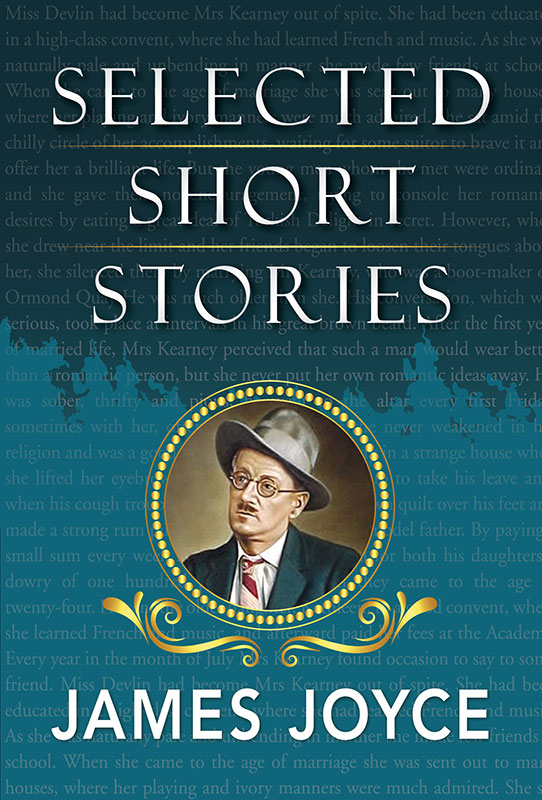James Joyce (2 February 1882 – 13 January 1941) was an Irish novelist and poet, regarded as one of the most influential and important authors of the twentieth century. Joyce's technical innovations in the art of the novel include an extensive use of interior monologue; he used a complex network of symbolic parallels drawn from the mythology, history, and literature, and created a unique language of invented words, puns, and allusions.
James Joyce was born in Dublin, on February 2, 1882, as the son of John Stanislaus Joyce, an impoverished gentleman, who had failed in a distillery business and tried all kinds of professions, including politics and tax collecting. Joyce's mother, Mary Jane Murray, was ten years younger than her husband. She was an accomplished pianist, whose life was dominated by the Roman Catholic Church. In spite of their poverty, the family struggled to maintain a solid middle-class facade.
From the age of six, Joyce was educated by Jesuits at Clongowes Wood College, at Clane, and then at Belvedere College in Dublin (1893-97). In 1898 he entered the University College, Dublin. Joyce's first publication was an essay on Ibsen's play 'When We Dead Awaken'. It appeared in the 'Fortnightly Review' in 1900. At this time he also began writing lyric poems.
After graduation in 1902, the twenty-year-old Joyce went to Paris, where he worked as a journalist, teacher and in other occupations under difficult financial conditions. He spent a year in France, returning when a telegram arrived saying his mother was dying. Not long after her death, Joyce was trave... See more
James Joyce (2 February 1882 – 13 January 1941) was an Irish novelist and poet, regarded as one of the most influential and important authors of the twentieth century. Joyce's technical innovations in the art of the novel include an extensive use of interior monologue; he used a complex network of symbolic parallels drawn from the mythology, history, and literature, and created a unique language of invented words, puns, and allusions.
James Joyce was born in Dublin, on February 2, 1882, as the son of John Stanislaus Joyce, an impoverished gentleman, who had failed in a distillery business and tried all kinds of professions, including politics and tax collecting. Joyce's mother, Mary Jane Murray, was ten years younger than her husband. She was an accomplished pianist, whose life was dominated by the Roman Catholic Church. In spite of their poverty, the family struggled to maintain a solid middle-class facade.
From the age of six, Joyce was educated by Jesuits at Clongowes Wood College, at Clane, and then at Belvedere College in Dublin (1893-97). In 1898 he entered the University College, Dublin. Joyce's first publication was an essay on Ibsen's play 'When We Dead Awaken'. It appeared in the 'Fortnightly Review' in 1900. At this time he also began writing lyric poems.
After graduation in 1902, the twenty-year-old Joyce went to Paris, where he worked as a journalist, teacher and in other occupations under difficult financial conditions. He spent a year in France, returning when a telegram arrived saying his mother was dying. Not long after her death, Joyce was traveling again. He left Dublin in 1904 with Nora Barnacle, a chambermaid who he married in 1931.
Joyce published 'Dubliners' in 1914, 'A Portrait of the Artist as a Young Man' in 1916, a play 'Exiles' in 1918 and 'Ulysses' in 1922. In 1907 Joyce had published a collection of poems, 'Chamber Music'.
At the outset of the First World War, Joyce moved with his family to Zürich. In Zürich Joyce started to develop the early chapters of 'Ulysses', which was first published in France because of censorship troubles in the Great Britain and the United States, where the book became legally available only in 1933. In March 1923 Joyce started his second major work, 'Finnegans Wake', suffering at the same time chronic eye troubles caused by glaucoma. The first segment of the novel appeared in Ford Madox Ford's transatlantic review in April 1924, as part of what Joyce called Work in Progress. The final version was published in 1939.






